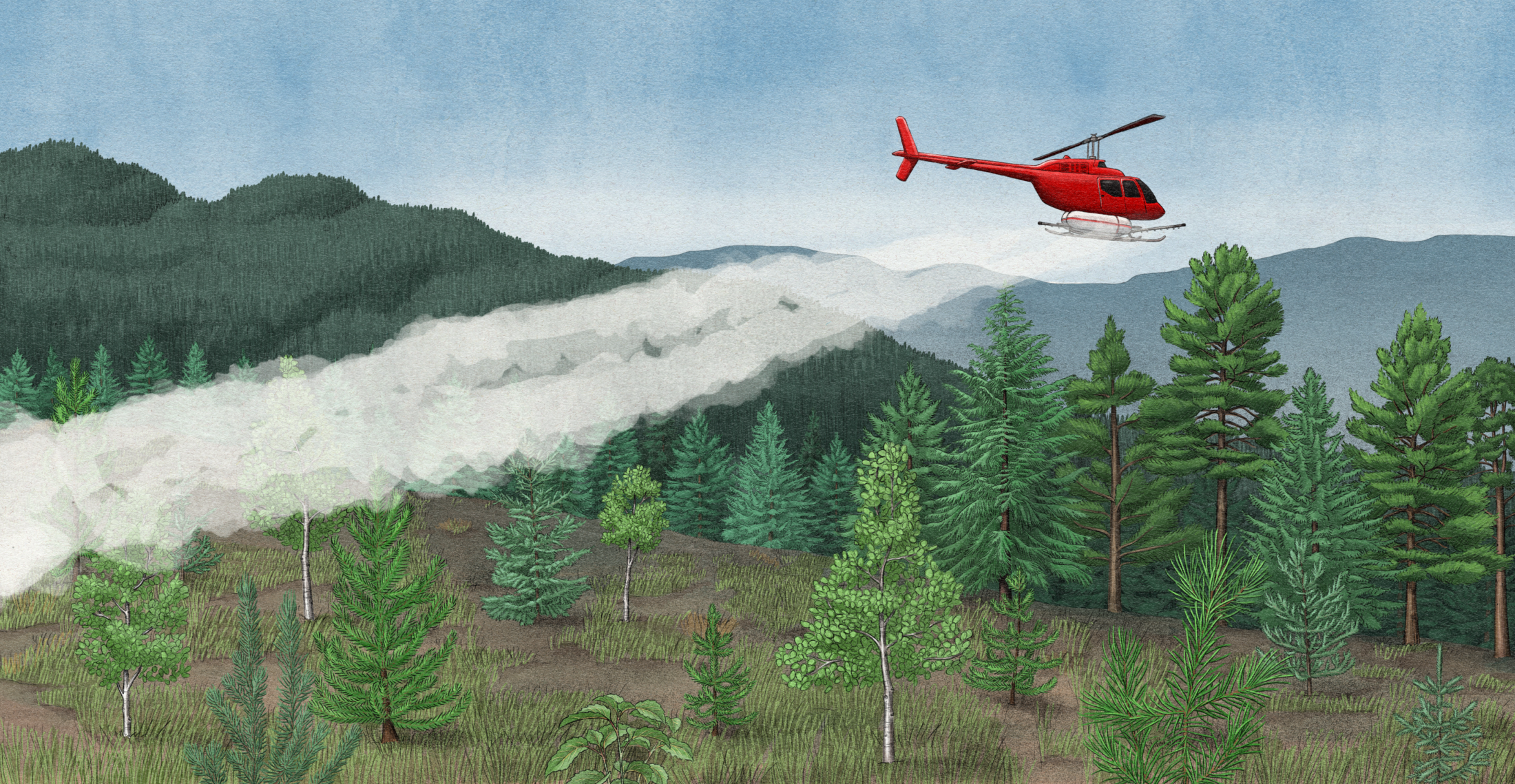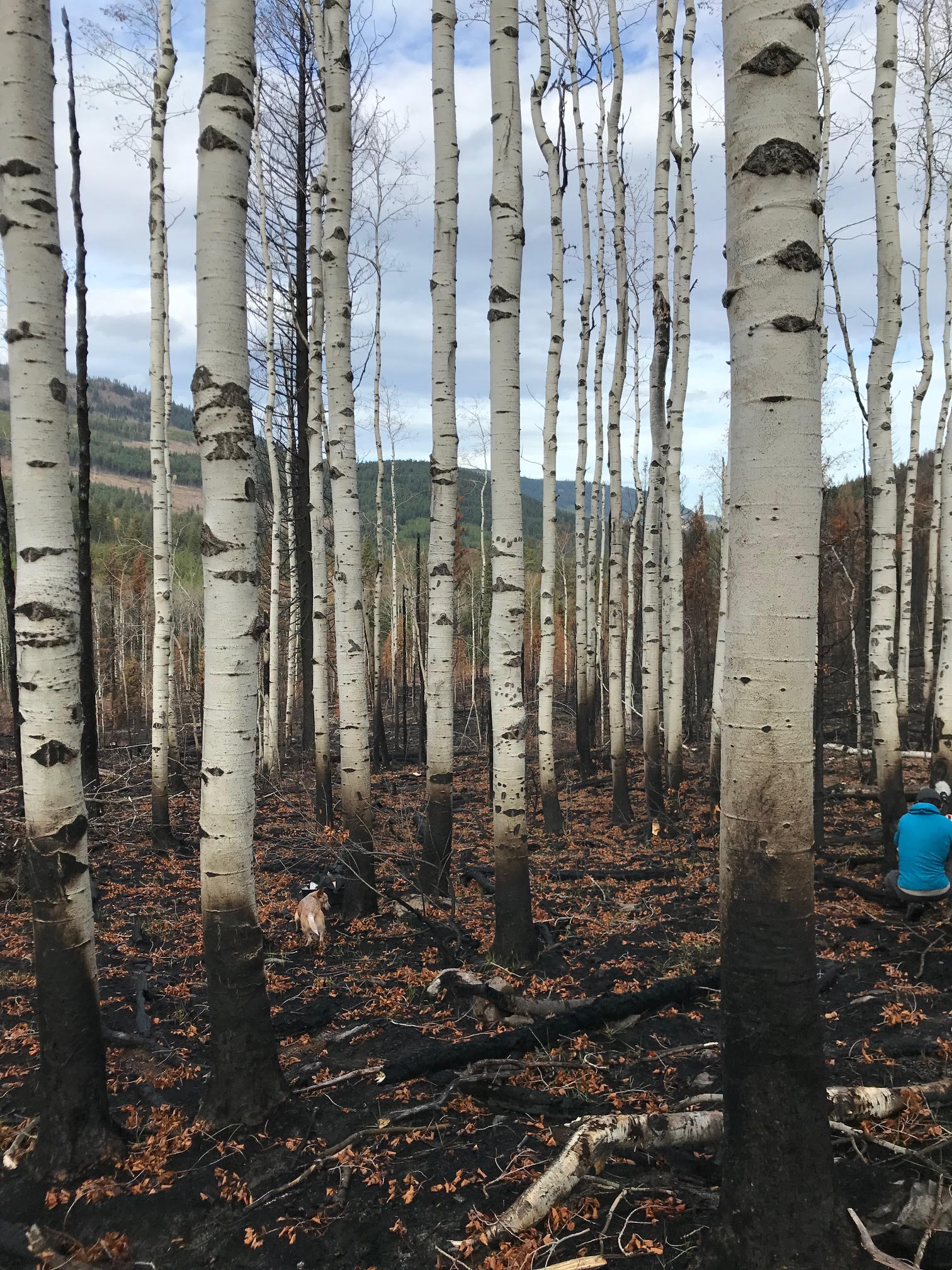
Hope for a huge, ancient and imperilled fish
First Nations are leading efforts to make sure lake sturgeon can find a home in...
Get the inside scoop on The Narwhal’s environment and climate reporting by signing up for our free newsletter.
For decades, forestry companies in B.C. have used glyphosate and other herbicides to kill off trembling aspen, a deciduous tree the industry and the provincial government view as unwanted competition for conifers destined to become timber.
The BC NDP, which returned to government with a slim majority in October, committed to phase out the controversial use of glyphosate in forestry during the provincial election campaign.
While ecologists and advocates welcome the promise, they warn it’s not just the herbicide that needs to go — it’s also B.C.’s broader policies that prioritize timber over diverse ecosystems.
After years of destructive wildfires, more and more people are recognizing the value of aspen and other deciduous trees.
In the summer, when aspens are lush and green, they act like a sponge, holding moisture from the forest floor in their bark and leaves. Conifers, by contrast, are drier, and their needles packed full of flammable resin. Conifers spur on fire, but aspens can slow it down.
As the provincial government considers its next steps, here are a few things you need to know about the use of herbicides in forestry — and the consequences of killing off aspen.
B.C. government regulations require companies to prioritize conifer growth over deciduous trees like aspen — and those that don’t risk fines for failing to meet certain milestones.
In many areas across B.C., companies manually cut back plants that might compete with conifers for water, nutrients and sunlight. But herbicides are often a less expensive option, according to a 2019 review of the industry’s use of glyphosate by FPInnovations, a non-profit focused on research and development in the forestry sector.

Glyphosate, which the World Health Organization says is probably carcinogenic to people, is the main component in the popular herbicide RoundUp. Plants absorb the chemical, which blocks them from taking in nutrients from the soil, through their leaves. As the plant starves, its colour fades, its leaves shrivel and then it dies.
Since the 1970s, more than one million hectares of forest in B.C. have been sprayed with herbicides — either by helicopter or on the ground using methods such as backpack sprayers.
Spraying ramped up in the 1980s, according to government data analyzed for The Narwhal by Nikita Wallia, a spatial analyst and cartography specialist.
In an emailed statement to The Narwhal, a spokesperson for B.C.’s Ministry of Forests said the use of herbicides in forestry has declined by 88 per cent since 2018, adding, “the province works with foresters to grow trees without glyphosate.”
But even as the practice becomes less common, the consequences of decades of glyphosate spraying are still visible in forests today, according to James Steidle, founder of Stop the Spray B.C., a group advocating for an end to glyphosate spraying. While Steidle says manually cutting back deciduous trees is better than spraying herbicides, he warns it can still have “huge impacts” on aspen communities and on forest biodiversity.
The Narwhal reviewed more than 2,000 pages of herbicide reports forestry companies submitted to the B.C. government, received in response to a freedom of information request. Those reports show companies are targeting a host of species with herbicide treatments, from aspen and cottonwood to willows and rose.
Many plants the industry targets provide food not just for deer, moose, bears and birds but also for people, who harvest berries and medicinal plants from the land. Mixed forests, made up of diverse species, have been found to be more resistant to pests and disease. Aspen, maples, poplars and other deciduous trees return nutrients to the soil when their leaves fall each autumn.
Aspens play an important role wherever they’re found. Beavers prefer aspen trunks and twigs to build their dams. Birds nest in their cavities. Moose, deer and black bears eat their leaves. And, during the height of wildfire seasons, groves of moist aspens can serve as a natural break. But those benefits are eroded or lost entirely when aspen are culled from forests where timber production is prioritized.
Wildland fire ecologist Robert Gray says herbicide use can change potential fire behaviour. In the short-term, it creates fuel for fires as sprayed plants dry out and die. The brush will eventually decompose, but a natural fire break is lost in areas where aspen and other deciduous trees are killed off.
“We talk about mature aspen as wet blankets or speed bumps on the landscape,” Gray says.
There are some caveats. Aspens dry out in the winter, so they are more resistant to fire when their leaves unfold from their buds each spring and they start to retain moisture. Even then, Gray says, groves of almost entirely deciduous trees — such as aspen, alder or birch — are needed to reap those fuel break benefits. And the trees must be tall enough and dense enough for their leafy canopies to close, shading the forest floor and trapping moisture in the soils and foliage below.
“We’re going to have to embrace hardwoods as part of the solution to the fire problem,” Gray says. “Moving away from herbicides specifically to kill aspen is the first step.”
The Yukon government is clearing conifers from a 20-kilometre stretch of forest to protect the city of Whitehorse from a potentially catastrophic wildfire. Expanses of white spruce and lodgepole pine are being cleared to make way for aspen.
To some degree, the territorial government is attempting to emulate a transformation that would naturally be triggered by fire, Luc Bibeau, the manager of prevention and mitigation with Yukon Wildland Fire Management, says. In many areas, aspens are one of the first species to naturally regenerate after fire or other disturbances. Eventually, those aspen groves transition to forests dominated by conifers. Then fire sweeps through and the cycle begins again.

But in many places across Canada, fires have been aggressively suppressed for decades, simultaneously suppressing the natural renewal of aspen forests.
“There hasn’t been a major wildfire in the area south of Whitehorse since somewhere around 1908,” Bibeau notes.
Today, the dense forests of spruce and pine around the northern city are primed to burn. The Whitehorse fire break, which is as wide as two kilometres in some areas, is meant to reduce the risk and give firefighters a better chance to respond in the event of a major blaze.
In B.C., Gray says the provincial government should move away from its “active war on hardwoods” like aspen in tandem with its plans to phase out glyphosate.
“We need a lot more not only aspen on the landscape, but shrub communities and grasslands — and that’s going to happen anyway with the kind of fires we’re having, we just should be helping it along,” he says.
Updated Dec. 20, 2024, at 12 p.m. PT: The map caption in this article was updated to include details from the map’s colour-coded legend.
Get the inside scoop on The Narwhal’s environment and climate reporting by signing up for our free newsletter. Angello Johnson’s shoulders burn, and his arms...
Continue reading
First Nations are leading efforts to make sure lake sturgeon can find a home in...

We’re excited to share that an investigation by The Narwhal is a finalist for the...

A new documentary, Nechako: It Will Be a Big River Again, dives into how two...
